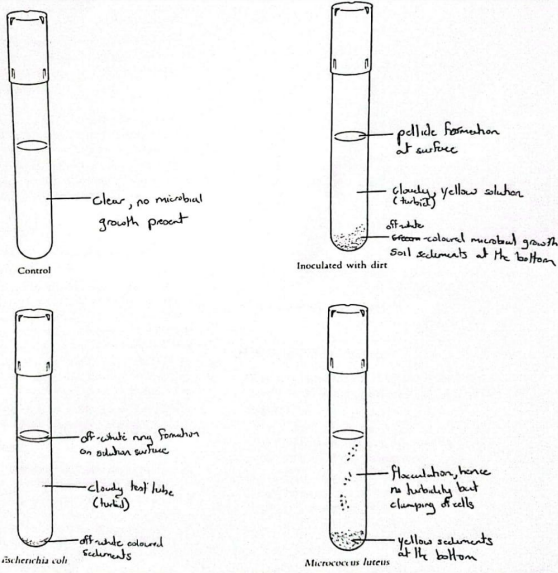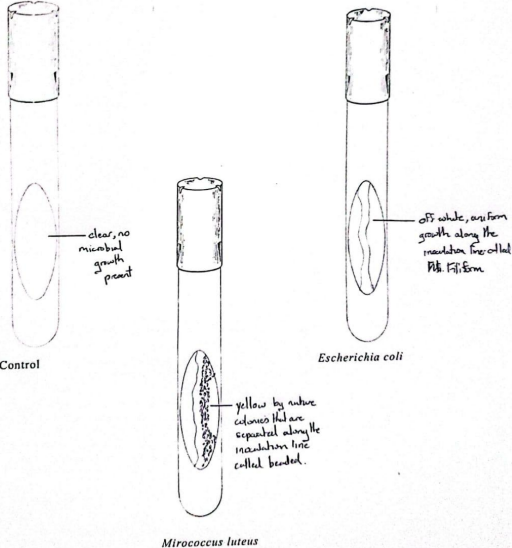
Culturing Microorganisms

Aseptic procedures are used in laboratories to limit the entry of pollutants or germs into the solution.
To verify that the microorganisms discovered are generated by germs in the sample rather than those in the lab environment, apply an aseptic procedure before and after inoculating the nutritive broth with dirt.
A pellicle is a thin transparent bacterial membrane that forms on the surface of the broth when it comes into contact with air, reducing contamination and allowing the bacteria to inhabit a healthy biological niche.
This can be performed by obligate anaerobes (organisms that cannot grow in the presence of oxygen) or slime generating microorganisms.
Temperature, osmolarity, ferrous iron ion concentration, nutrition availability, the quality of materials used to make biofilms, light, and ambient acidity are all environmental factors that impact pellicles formation.

When inoculating agar with bacteria, it is important to avoid damaging the agar surface with the inoculating loop, as this can lead to uneven distribution of microbes and difficulty in identifying which organisms are aerobes or anaerobes.
Because of the microscopic pores in the medium, which are around 1-2 microns in size, plus the fact that the medium is solid, motile bacteria cannot grow in agar. This means that the bacteria would need a lot of energy from different enzymes to travel through the agar.
Due to the smaller surface area, fewer microbes can be picked up with the inoculating needle, making it easier to isolate individual colonies from the streak plate to the agar slope, as well as easy access to the test tubes due to their size, allowing for the precise number of cultures to be transferred.
Culturing Microorganisms

Aseptic procedures are used in laboratories to limit the entry of pollutants or germs into the solution.
To verify that the microorganisms discovered are generated by germs in the sample rather than those in the lab environment, apply an aseptic procedure before and after inoculating the nutritive broth with dirt.
A pellicle is a thin transparent bacterial membrane that forms on the surface of the broth when it comes into contact with air, reducing contamination and allowing the bacteria to inhabit a healthy biological niche.
This can be performed by obligate anaerobes (organisms that cannot grow in the presence of oxygen) or slime generating microorganisms.
Temperature, osmolarity, ferrous iron ion concentration, nutrition availability, the quality of materials used to make biofilms, light, and ambient acidity are all environmental factors that impact pellicles formation.

When inoculating agar with bacteria, it is important to avoid damaging the agar surface with the inoculating loop, as this can lead to uneven distribution of microbes and difficulty in identifying which organisms are aerobes or anaerobes.
Because of the microscopic pores in the medium, which are around 1-2 microns in size, plus the fact that the medium is solid, motile bacteria cannot grow in agar. This means that the bacteria would need a lot of energy from different enzymes to travel through the agar.
Due to the smaller surface area, fewer microbes can be picked up with the inoculating needle, making it easier to isolate individual colonies from the streak plate to the agar slope, as well as easy access to the test tubes due to their size, allowing for the precise number of cultures to be transferred.
 Knowt
Knowt